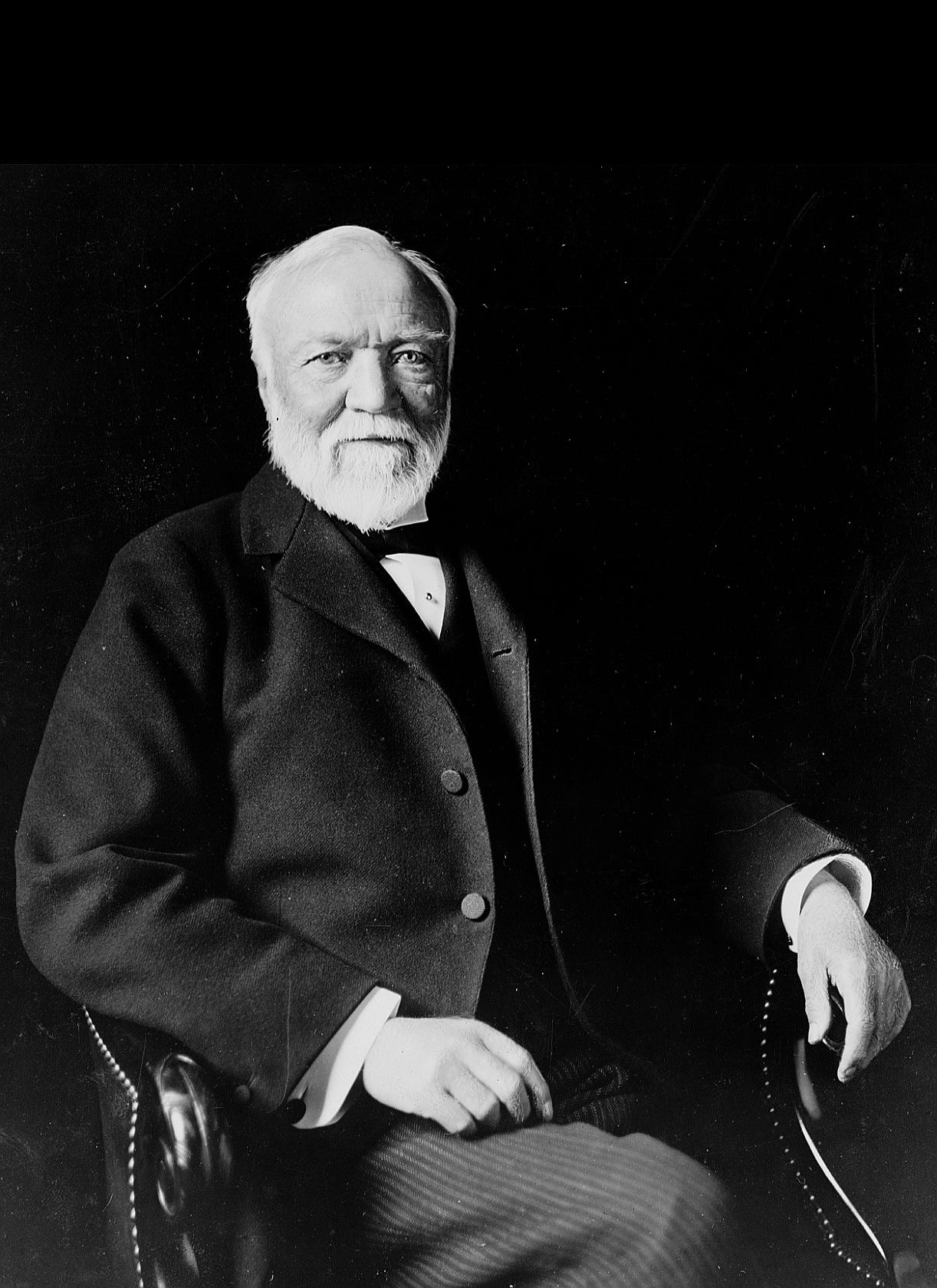Twenty Facts About Andrew Carnegie
Born this Day in 1835
To celebrate the anniversary of Dunfermline’s most famous son, here are 20 interesting facts about Andrew Carnegie:
Born in Dunfermline, Scotland on November 25, 1835, Carnegie immigrated to the United States with his family in 1848 at age 12.
He started his career as a telegraph messenger boy, earning just $2.50 per week.
In 1902 Carnegie purchased Pittencrieff Park, also known as “The Glen”, from Colonel James Hunt and gifted it to the people of Dunfermline in 1903.
He sold Carnegie Steel Company to J.P. Morgan in 1901 for $303,450,000 (equivalent to $11.1 billion today).
.
During the Civil War, he was superintendent of Military Railways and Telegraph Lines. This involved the repair of rail systems and telegraph communications, which were vital to The Union’s war efforts.
Carnegie was an early adopter of the Bessemer process, which revolutionised steel production. Invented by Sir Henry Bessemer, this process allowed for the mass production of steel by blowing air through molten pig iron,
.
He practiced vertical integration in his business, controlling every aspect of steel production from mines to transportation. This strategy allowed him to produce cheaper steel, outcompete rivals, and dominate the industry.
.
Carnegie funded the construction of 2,509 libraries worldwide, including 1,795 in the United States.
.
He believed "the man who dies rich dies disgraced" and gave away approximately $350 million (about $6.5 billion in 2024).
.
Carnegie established the Carnegie Trust for the Universities of Scotland, donating $10 million in 1901.
He founded Carnegie Mellon University to provide practical skills to working-class men and women. To this day it remains one of the top ranking universities in the world.
Carnegie was a philanthropist who focused on helping people help themselves. He believed in supporting those who showed ambition and was quite critical of indiscriminate charity.
.
He funded the construction of Carnegie Hall in New York City. He contributed $1.1 million for the project , which began in 1889 and was completed in 1891.
At his peak, Carnegie Steel was producing approximately 2,000 tons of pig iron per day.
He was elected Lord Rector of the University of St. Andrews from 1901 to 1907.
.
Carnegie's early access to Colonel James Anderson's personal library sparked his love for learning. Anderson, a business man and philanthropist, opened his library to working boys on a Saturday morning.
.
He played a pivotal role in establishing The Peace Palace in The Hague. Opened in 1903, it was a landmark in international diplomacy. He contributed $1.5 million toward its construction.
.
Carnegie wrote "The Gospel of Wealth" in 1889, advocating for wealthy individuals to use their money for community benefit.
.
He died of pneumonia on August 11, 1919, in Lenox, Massachusetts.
By the time of his death, he had given away almost 90% of his fortune to charitable causes.
Thanks for reading. we’ll be back with a new article soon.
.


